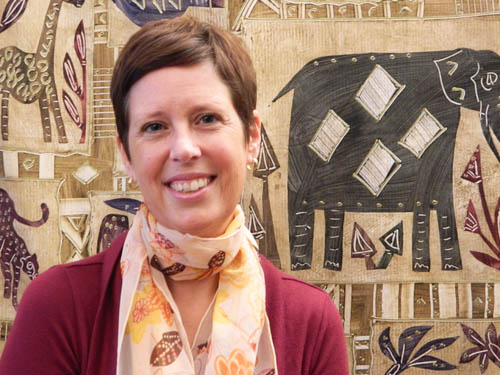Story by Joey Sabljic, a U of G graduate and former SPARK writer (Students Promoting Awareness of Research Knowledge)

Being immersed in a faraway place can be full of intrigue and excitement for students enrolled in residential field courses, but is it essential for learning? Can students gain similar experiential education by doing their learning and fieldwork within the local context, or even in the classroom?
Geography professor Alice Hovorka worked with Peter Wolf, director of the Centre for Open Learning and Educational Support to design a third-year geography course that re-imagines the location of the “field” being studied.
“Using the classroom and everyday life as an entry point for field research is allowing students to create meaning and construct knowledge about the world for themselves,” she says.
The course “Gender and the Environment” emphasizes issues such as gender representation and roles closer to home. In terms of geography, Hovorka and her students look at how gender affects the way both men and women use their immediate environments and spaces.
In place of an exotic locale, students use local spaces as their study field. The course explores just how and to what extent socially prescribed gender roles dictate a variety of factors – how men and women are to behave in public, what places or roles they occupy and even what they’re supposed to look like.
The students begin the course with a series of journaling assignments, where they examine how gender roles or representations have affected their own life experiences. Next, they branch out to explore and analyze representations of men and women within several different types of media, including newspapers, advertisements and television. Finally, the students conduct their own fieldwork as they venture out into locations in and around Guelph – bars, fitness centres, downtown streets, libraries and restaurants – to study how men and women interact and behave within these spaces.
Hovorka and Wolf had students rate their overall learning experiences in a geography residential field course and in Hovorka’s classroom-based course. Their findings, which were published in the Journal for Geography in Higher Education, showed that students scored the classroom-based course high for being able to practically apply theories and lectures. Students also felt that the classroom-based course provided more opportunities to collaborate with classmates, explore their personal beliefs and learn through several different approaches such as reading, writing and discussion.
They did, however, give the field course the nod for opportunities for extended hands-on work and skill development.
Hovorka hopes that her classroom-based course will help open up teaching possibilities for geography instructors looking to enhance classrooms by integrating geographical concepts and approaches into the field of everyday life as legitimate points for research and study. It may also provide avenues for experiential learning beyond residential field courses, which are increasingly challenged by funding and resource issues.
“The field is really more than some exotic place,” says Hovorka. “It is everywhere and students can use any place to create meaning in the same way that they would in a field course.”